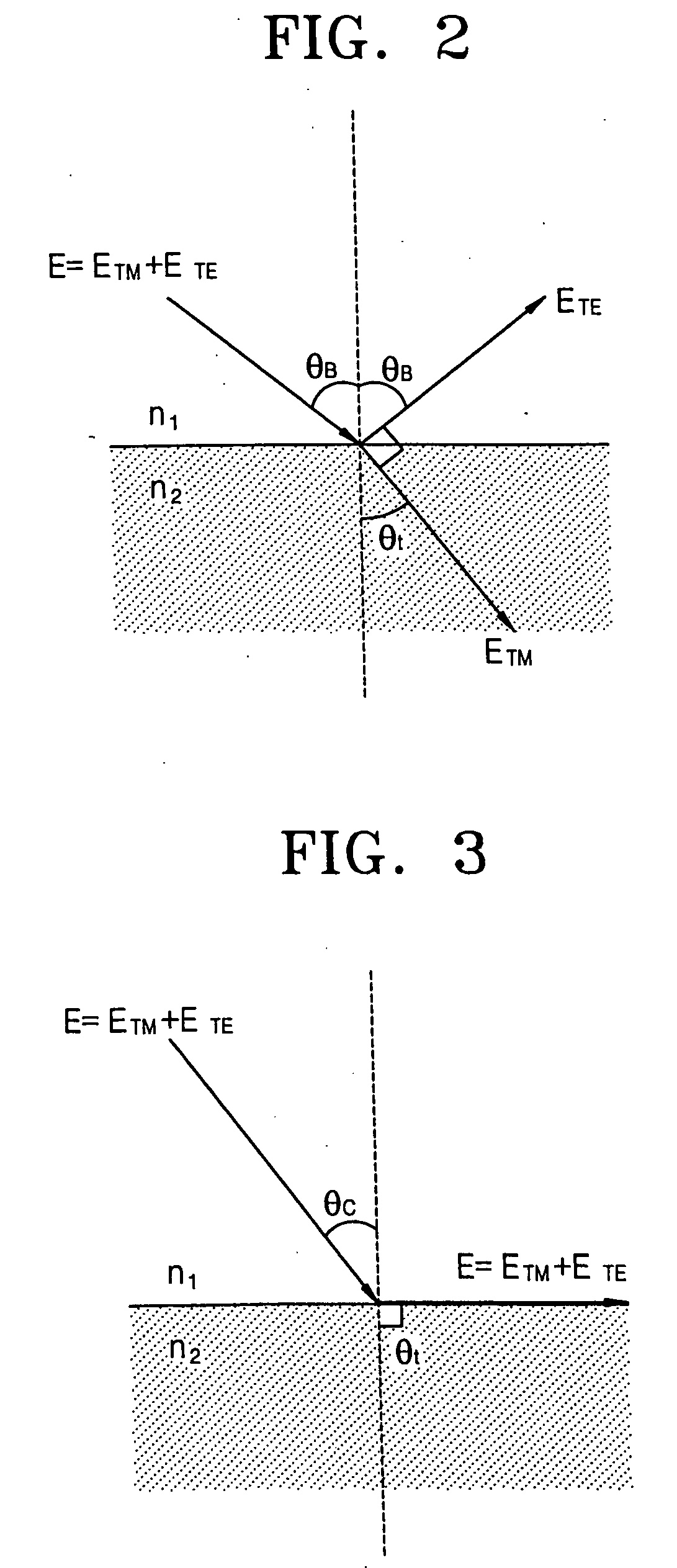Photo mask capable of improving resolution by utilizing polarization of light and method of manufacturing the same
- Summary
- Abstract
- Description
- Claims
- Application Information
AI Technical Summary
Benefits of technology
Problems solved by technology
Method used
Image
Examples
experimental example 1
[0045] Hereinafter, changes in contrast according to changes in the thickness of the external reflection pattern will be described with reference to simulations, the results of which are shown in FIG. 6. Graph (a) of FIG. 6 shows generalized intensity changes of a TE wave, a TM wave and a TEM wave obtained through a simulation in which a conventional BM is used. Graph (b) of FIG. 6 shows generalized intensity changes of a TE wave, a TM wave and a TEM wave obtained through a simulation in which a photo mask including a reflection pattern having a thickness of 240 nm according to the present invention is used. The simulations were carried out using a lens with a numerical aperture (NA) of 0.8, an annular aperture of 0.59 / 0.89 and a line and space pattern of 140 nm. The reflection pattern is made of SOG, the transparent substrate is a quartz substrate, and the light-blocking pattern is a chrome pattern.
[0046] In the case of the BM, the TM wave has a lower maximum intensity and a highe...
experimental example 2
[0048]FIG. 8 is a graph showing changes in the reduction ratio of minimum intensity and corresponding changes in contrast, according to changes in the thickness of a SOG pattern, with respect to a pattern having a pitch of 140 nm. The conditions of this simulation are same as in Experimental Example 1 except that the pattern is a hole-shaped contact pattern.
[0049] Referring to FIG. 8, the reduction ratios of the minimum intensity, with respect to an X direction and a Y direction perpendicular to the X direction, decrease as the SOG pattern becomes thinner, and become nearly constant once the thickness exceeds about 120 nm. Accordingly, FIG. 8 shows that the contrast becomes maximum when the thickness of the SOG pattern is 120 nm. Also, FIG. 8 shows that enhanced contrast is achieved when the SOG pattern is thinner than 240 nm (the thickness of a phase shift film). This is because with respect to a contact pattern, the reflection pattern would be formed on four sides in the light-tr...
PUM
 Login to View More
Login to View More Abstract
Description
Claims
Application Information
 Login to View More
Login to View More - Generate Ideas
- Intellectual Property
- Life Sciences
- Materials
- Tech Scout
- Unparalleled Data Quality
- Higher Quality Content
- 60% Fewer Hallucinations
Browse by: Latest US Patents, China's latest patents, Technical Efficacy Thesaurus, Application Domain, Technology Topic, Popular Technical Reports.
© 2025 PatSnap. All rights reserved.Legal|Privacy policy|Modern Slavery Act Transparency Statement|Sitemap|About US| Contact US: help@patsnap.com



